toomy's offical "claiming Russia to be a black country" thread
Options
toomy
Members Posts: 369
Similar to the Book Of Mormon the Book Of Veles was written on wooden Planks. The Book of Mormon was written on metallic plates. They both tell the tale of ancient people not written about any where else. And they are both considered to be fake.
http://en.wikipedia.org/wiki/Book_of_Veles
The Book of Veles (also: Veles Book, Vles book, Vlesbook, Isenbeck's Planks, Велесова книга, Велесова књига, Велес книга, Книга Велеса, Дощечки Изенбека, Дощьки Изенбека) is a literary forgery claimed to be a text of ancient Slavic religion and history written on wooden planks.
It contains religious passages and accounts of history interspersed with religious morals. The earliest events in the book could be dated around 7th century BC and the latest happened in 9th century AD.
The book was allegedly discovered in 1919 and lost in 1941. It is widely held by scholars to be a forgery made in the 1940s–1950s or, which is less likely, in the early 19th century. The main decisive evidence is the language of the text which is a mixture of different modern Slavic languages with erroneous and invented forms and no regular grammar. Moreover, different modern editions of the book have different versions of its text. Regardless, some Slavic Neopagans use it as their sacred text.
This is Russia's ? Savaof
[IMG]http://engraver.files.wordpress.com/2009/08/4-? -savaof.jpg?w=470&h=858[/IMG]
http://www.levashov.info/English/Articles/Svarog_Night-eng.html
Before dwelling on the last Night of Svarog, I would like to make some observations. Unfortunately, certain groups of scientists have been imposing, even on the Russian people, the idea that the Slavonic-? Vedas as well as the Book of Veles are a fake.
Also, and this is very unpleasant, modern "science" denies fervently everything related to the Book of Veles, even the photograph of a small plank done by Mirolyubov in 1942 (there were no computers with their unbelievable possibilities then, and it was simply impossible to create a fake of this level). The most staggering thing is that this "denial" is observed mostly in Russia. Moreover, precisely in Russia a lot of "scientists" attack the Book of Veles the most aggressive way. Abroad the existence of this document is simply hushed up.
What is the reason for this concealment?
The answer is rather simple. The Book of Veles reflects the past of the Slavs for a period of more than 20,000 years! A volkhv-keeper made the last record in it in 6496 according to the Slavonic-? chronology or in end of the 10th century (988 A.D). At this time the obtrusion of a new religion, which in the 12th century came to be called Christianity, began with unbelievable cruelty in Kievan Rus, which unexpectedly turned out to be the Slavonic-? Empire’s westernmost province (after the revolt and separation of its western provinces).
The last records in the Book of Veles coincide with the time of the Kievan Rus’s violent christening. I every corner of the country, to where the werewolves of Vladimir the "Saint", who baptized Kievan Rus, were able to extend their hands, all adults and adolescents, who renounced to accept a religion alien and opposite to the Russian spirit were physically destroyed; and the priests of this religion hammered into the heads of frightened seven-to eight-year-old children the concepts of spiritual and physical slavery.
It turns out quite an interesting coincidence, if it can be called a coincidence at all, whether some hisTORical "scientist" like it or not. Both the last record in the Book of Veles and christening of Kievan Rus fall at the same time—the end of the 10th century according to contemporary chronology. According to the Slavonic-? , or vedic, conceptions this was the time of the beginning of the last and the hardest Night of Svarog, which wrapped Midgard-Earth (1) with it gloomy and ? veil for Seven Circles of Life (2) —1008 years—from 6496 (988 A.D.) to 7504 (1995-1996 A.D.).
http://en.wikipedia.org/wiki/Book_of_Veles
The Book of Veles (also: Veles Book, Vles book, Vlesbook, Isenbeck's Planks, Велесова книга, Велесова књига, Велес книга, Книга Велеса, Дощечки Изенбека, Дощьки Изенбека) is a literary forgery claimed to be a text of ancient Slavic religion and history written on wooden planks.
It contains religious passages and accounts of history interspersed with religious morals. The earliest events in the book could be dated around 7th century BC and the latest happened in 9th century AD.
The book was allegedly discovered in 1919 and lost in 1941. It is widely held by scholars to be a forgery made in the 1940s–1950s or, which is less likely, in the early 19th century. The main decisive evidence is the language of the text which is a mixture of different modern Slavic languages with erroneous and invented forms and no regular grammar. Moreover, different modern editions of the book have different versions of its text. Regardless, some Slavic Neopagans use it as their sacred text.
This is Russia's ? Savaof
[IMG]http://engraver.files.wordpress.com/2009/08/4-? -savaof.jpg?w=470&h=858[/IMG]
http://www.levashov.info/English/Articles/Svarog_Night-eng.html
Before dwelling on the last Night of Svarog, I would like to make some observations. Unfortunately, certain groups of scientists have been imposing, even on the Russian people, the idea that the Slavonic-? Vedas as well as the Book of Veles are a fake.
Also, and this is very unpleasant, modern "science" denies fervently everything related to the Book of Veles, even the photograph of a small plank done by Mirolyubov in 1942 (there were no computers with their unbelievable possibilities then, and it was simply impossible to create a fake of this level). The most staggering thing is that this "denial" is observed mostly in Russia. Moreover, precisely in Russia a lot of "scientists" attack the Book of Veles the most aggressive way. Abroad the existence of this document is simply hushed up.
What is the reason for this concealment?
The answer is rather simple. The Book of Veles reflects the past of the Slavs for a period of more than 20,000 years! A volkhv-keeper made the last record in it in 6496 according to the Slavonic-? chronology or in end of the 10th century (988 A.D). At this time the obtrusion of a new religion, which in the 12th century came to be called Christianity, began with unbelievable cruelty in Kievan Rus, which unexpectedly turned out to be the Slavonic-? Empire’s westernmost province (after the revolt and separation of its western provinces).
The last records in the Book of Veles coincide with the time of the Kievan Rus’s violent christening. I every corner of the country, to where the werewolves of Vladimir the "Saint", who baptized Kievan Rus, were able to extend their hands, all adults and adolescents, who renounced to accept a religion alien and opposite to the Russian spirit were physically destroyed; and the priests of this religion hammered into the heads of frightened seven-to eight-year-old children the concepts of spiritual and physical slavery.
It turns out quite an interesting coincidence, if it can be called a coincidence at all, whether some hisTORical "scientist" like it or not. Both the last record in the Book of Veles and christening of Kievan Rus fall at the same time—the end of the 10th century according to contemporary chronology. According to the Slavonic-? , or vedic, conceptions this was the time of the beginning of the last and the hardest Night of Svarog, which wrapped Midgard-Earth (1) with it gloomy and ? veil for Seven Circles of Life (2) —1008 years—from 6496 (988 A.D.) to 7504 (1995-1996 A.D.).
Comments
-
There's also a collection of poems called Veda Slovena that is said to be as old as the Old Testament.
http://www.radhe.net/history/en/vslovena.htm
Later, a saintly person came down from the sky and said predicting:
“You’ll have a son from heaven,
he’ll glorify Lord Vishnu with his flute.
This child will have all good qualities,
He’ll pacify all lands and mountains,
He’ll be the king of the earth.”
The saintly man said all that,
and flew back in the sky
to glorify Lord Vishnu
who’s performing His miracles on earth. -
There's also a town in Russia called Arkaim that's as old as Egypt and Babylon.
In pseudoarchaeology and national mysticism
Since its discovery, Arkaim has attracted public and media attention in Russia, from a broad range of the population, including esoteric, New Age and pseudoscientific organizations. It is said to be the most enigmatic archaeological site within the territory of Russia, and as with many archaeological discoveries, many conflicting interpretations have been put forward.
? City
In order to gain publicity, the early investigators described Arkaim as "? City", "Mandala City", and "the ancient capital of early ? civilization, as described in the Avesta and Vedas". The ? description refers to the floor plan of the site, which (with some imagination) may appear similar to the ? symbol, albeit with rounded arms (similar to the lauburu) attached to a central ring instead of a cross.
Observatory
The similarity of latitude, date, and size led some archaeoastronomists (Bystrushkin 2003) to compare Arkaim with Stonehenge in England. According to their claims, the Neolithic observatory at Stonehenge allowed for observation of 15 astronomical phenomena using 22 elements, whereas the contemporaneous observatory at Arkaim allowed for observation of 18 astronomical phenomena using 30 elements. The precision of measurements in Stonehenge is estimated at 10 arc-minutes to a degree, that in Arkaim being put at 1 arc-minute. Such a precision of astronomical observations was not repeated until the compilation of Almagest about 2 millennia later. The interpretation as an observatory for either Stonehenge or Arkaim is not universally accepted.
Scientists discovered mysterious circles on the area of the ancient Russian town of Arkaim, which is the same age with Egypt and Babylon
President Putin has recently visited one of the most mysterious places on planet Earth - the ruins of the ancient town of Arkaim, which is situated on the outskirts of the city of Chelyabinsk. Historians, archaeologists and ufologists have spent many years trying to unravel the secrets of the town. Which nation was living in Arkaim more than 40 centuries ago? How did people of such ancient civilization manage to accomplish incredible technological progress, which still seems to be unachievable nowadays? A group of Russian researchers, with Vadim Chernobrovy at the head, has recently returned from the mysterious region. The scientist said that specialists and students had built numerous tent camps around Arkaim. -
Wow. Check out the pictures in reference to another ancient text called Novgorod written on birch bark wood.
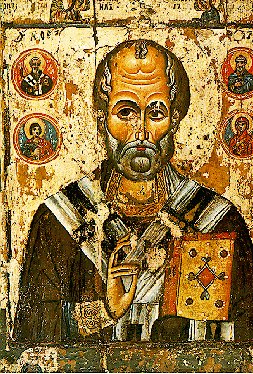
Old Novgorod dialect (Russian: древненовгородский диалект, also translated as Old Novgorodian or Ancient Novgorod dialect) is a term introduced by Andrey Zaliznyak to describe the astonishingly diverse linguistic features of the Old East Slavic birch bark writings ("berestyanaya gramota") from the 11th to 15th centuries excavated in Novgorod and its surroundings. The first birch bark letter was found on July 26, 1951 by Nina Fedorovna Akulova, and at least 1025 have been unearthed thereafter—923 in Novgorod alone. Today, the study of Novgorodian birch bark letters is an established scholarly field in Russian historical linguistics, with far-ranging historical as well as archaeological implications for the study of the Russian Middle Ages.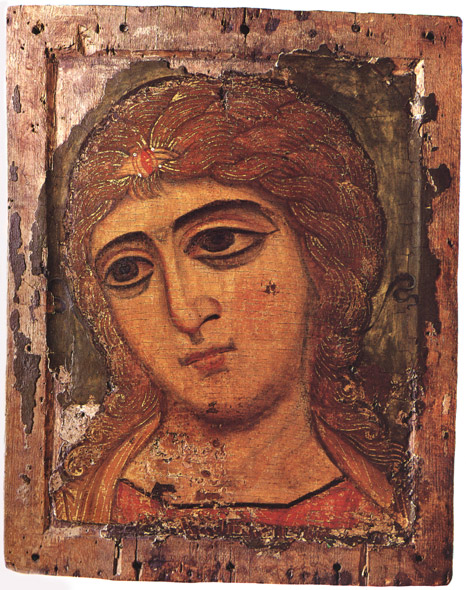

LOOK AT ALL THE BLACK PEOPLE DEPICTED ON THIS PAGE
http://www.icones-grecques.com/textes/iconographie-orthodoxe/la-pentecote-et-son-icone.htm -
............
-
this seems to be the most relevant part.It is widely held by scholars to be a forgery made in the 1940s–1950s or, which is less likely, in the early 19th century. -
lol
when will this madness stop lmao -
http://www.ipoaa.com/images/peter_ustinov.htm
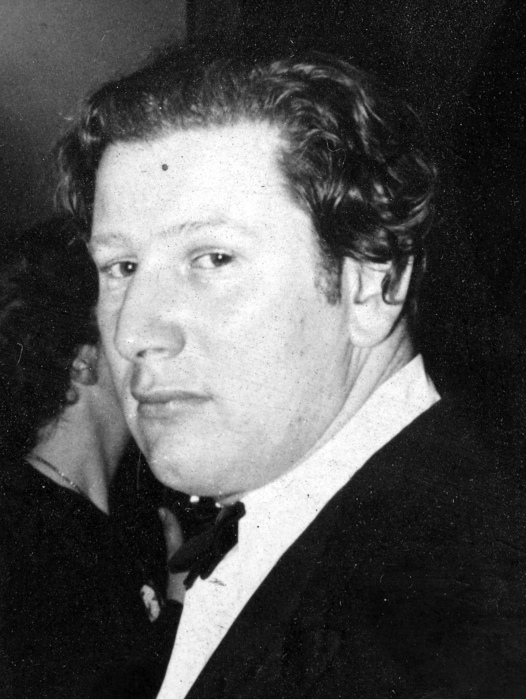
On his father's side, Ustinov is a member of the old Russian nobility. But on his mother's side, he is a member of the Ethiopian Royal Family. The origin of this interracial line was the marriage of his great grandfather, a Swiss military engineer, with the daughter of the Emperor Theodore II. Forbidden to leave Ethiopia, as were the most valued of the Europeans who joined the Imperial service, the engineer had been wedded to the princess, apparently not only in compensation, but to insure his loyalty to the Emperor.
The former Ethiopian legation to Canada, who were then working with the Department of MultiCultural Affairs in Quebec related how, on a number of occasions, they had requested Ustinov to represent Ethiopia to the media in the same way that he had Russia during the years of the cold war when he appeared to be the only cultural liaison between the Soviet Union and the West. Apparently because of the racial climate at the time, Ustinov had not been able to rise to the occasion. Indeed, in his first two autobiographies, he described his great grandmother as a Portuguese woman at the Ethiopian court. It was not until sometime later that he acknowledged his royal genealogy during a CBC Radio interview. -
More images


Plus an excerpt from "Tales of Times Gone By" by the Russian Primary Chronicles. Tells stories about tribes fighting the ancient Greeks.
http://pages.uoregon.edu/kimball/chronicle.htm
Excerpts from "Tales of Times Gone By" [Povest' vremennykh let]
The Russian Primary Chronicles
Sources: Pamiatniki literatury Drevnei Rusi (Dmitrii Likhachev, etc., eds. MVA:1978) and
A. S. Orlov et al., eds., Khrestomatiia po istorii Rossii s drevneishikh vremen do nashikh dnei (MVA:1999), in close consultancy with
extended English translations in CPC & ZNC, and
excerpts in DMR | KRR | RRC | VSB,1 & ZMR
SAC editor has entered boldface font, hypertext links and bracketed summaries and transitions, better to fit these texts to our course
1.
Invitation to the Rus'
860-862 (6368-6370) [The four tribes who had been forced to pay tribute to the Varangians--Chuds, Slavs, Merians, and Krivichians] drove the Varangians back beyond the sea, refused to pay them further tribute, and set out to govern themselves. But there was no law among them, and tribe rose against tribe. Discord thus ensued among them, and they began to war one against the other. They said to themselves, "Let us seek a prince who may rule over us, and judge us according to custom [po nravu]". Thus they went overseas to the Varangians, to the Rus. These particular Varangians were known as Rus', just as some are called Swedes, and others Normans and Angles, and still others Gotlanders, for they were thus named. The Chuds, the Slavs, the Krivichians and the Ves then said to the Rus, "Our land is great and rich, but there is no order in it. Come reign as princes, rule over us". Three brothers, with their kinfolk, were selected. They brought with them all the Rus' and migrated. The oldest, Rurik, located himself in Novgorod; the second, Sineus, in Beloozero; and the third, Truvor, in Izborsk. From these Varangians, the Russian land received its name [prozvalas’ Russkaia zemlia]. Thus those who live in Novgorod are descended from the Varangian tribe, but earlier they were Slavs. Within two years, Sineus and his brother Truvor died. Rurik gathered sole authority into his own hands, parceling out cities to his own men, Polotsk to one, Rostov to another, and to another Beloozero. The Varangians in these cities are colonists, but the first settlers in Novgorod were Slavs; in Polotsk, Krivichians; in Beloozero, Ves; in Rostov, Merians; and in Murom, Muromians. Rurik had dominion over all these folk. Two of Rurik’s men [Askold and Dir] who were not of his tribe but were warriors [boyare] sought permission to go to Tsar’grad [Constantinople] with their tribe. They thus sailed down the Dnepr, and in the course of their journey they saw a small city on a hill. They asked, "Whose town is this? " The inhabitants answered, "There were three brothers, Kii, Shchek and Khoriv, who built this burg, but they have since died. We who are their descendants dwell here and pay tribute to the Khazars [ID]". Askold and Dir remained in this city, and after gathering together many Varangians, they established their dominion over the country of the Polianians. Rurik ruled in Novgorod.
2.
The missions of Kiril [Cyril or sometimes Konstantin] and Mefodii [Methodios] [ID]
[...] Slavs were altogether one people [edin narod slavianskii], including those Slovenes [slaviane] who were settled along the Danube River where they were ruled by Magyars [Ugry or Hungarians (ID)], and including Moravians [moravy] and Czechs [chekhi] and also including the poliaki and poliane who are today [14th century] called Rus'. For these, that is for the Moravians, the original alphabet [bukvy] was created and designated the Slavic script. This script was taken up by the Russians and by the Danube Bulgarians.
These Slovenes had been for some time baptized Christians when their princes Rastislav [ID], Sviatopolk and Kotsel sent [emissaries] to Byzantine Emperor [tsar] Michael with the following message. "Ours is a baptized land, but we have no teacher who can guide and teach us, or interpret the holy books. We do not even know Greek or Latin. One person teaches us one thing and another something else. The result is we do not know how to write or interpret the written word. Please send us teachers who can tell us about written books and their meaning." Hearing this, Emperor Michael assembled all the philosophers [scholars] and communicated to them everything the Slavic princes said. [The philosophers recommended two talented scholars who knew the Slavic language, Mefodii and Konstantin.] When these two brothers arrived [in the lands of Rastislav, Sviatopolk and Kotel in the year 863] they set about the task of devising a Slavic alphabet and translating the Acts of the Apostles and the Bible. And the Slavs were joyous to hear of ? 's grandeur in their own language. [...] Some people condemned the Slavic books, arguing that it was not right for any nation to have its own alphabet except the Hebrews, the Greeks and the Latins. Pilat wrote on the placard affixed to the top of Christ's cross only in these languages. The Pope in Rome got word of this complaint and rebuked those who criticized the Slavic books. [But as the rivalry intensified between western and eastern Christianity, the Pope turned against the Orthodox use of vernacular languages [EG] in the mass and in holy texts.] -
Tsarskiy titularnik (Царский титулярник, Tsar's Book of Titles) is the Russian illuminated manuscript, made in 1672 by D.Lvov, I.Maximov and collective of painters of Kremlin Armoury, with more than 50 portraits of Russian and foreign royalty and 49 coat of arms.

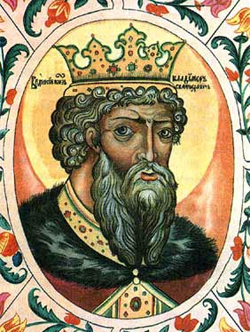


-
More images..

1371—Vasily I, Great Prince of Moscow and Vladimir, is born.
Vasily is the eldest son of Dmitry Donskoy. He carries on uniting Russian lands: he incorporated Nizhny Novgorod, Murom, Vologda, Gorodets, Tarusa, and Meshchera into Russia, but let Lithuanian Prince Vitovt have Smolensk. Two of the most famous Russian icon painters – Pheophan Grek and Andrey Rublev – lived and created at that time.
http://psuchopadt.ya.ru/replies.xml?item_no=4936
Translation..сково-печерский Piously-успенский the man's monastery based in XV century. In 1920 according to conditions Тартуского of the peace treaty the city has passed Estonia and became an administrative centre of district Petserimaa (from " Пе? тсери " (Petseri)), the Estonian name of city) owing to what the monastery was kept. After connection of Estonia to the USSR in 1940 the city remained within the limits of administrative borders Estonian ССР, from August, till August, 11th, 1944 has been occupied by ? Germany (administratively submitted Рейхскомиссариату Остланд). In January, 1945 became a part of Pskov area РСФСР.Свя? That? нский Пско? In-пече? рский мужско? й монасты? рь - one of the man's monasteries largest and rich in Russia with centuries-old history. In 1473 cave church Uspeniya dug out in sand that is considered time of the basis of a monastery here has been consecrated. The monastery never for all history was closed. Authentic data on the beginning of a monastic life on a place of a modern monastery are not present. " зданная " the cave became known for the ? to local residents in 1392.
-
Prince Rurik
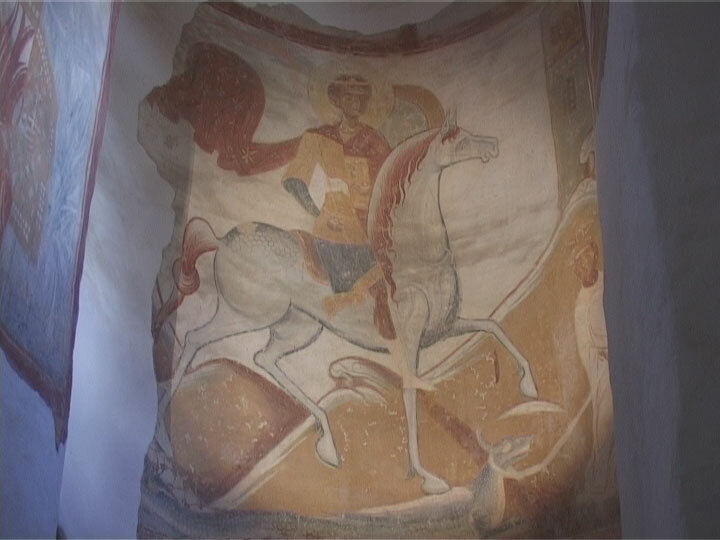
Ruryk Rostislavich (Рюрик Ростиславич in Ukrainian) (? – 1215), Prince of Novgorod (1170–1171), Belgorod Kievsky, presently Bilohorodka (1173–1194), Grand Prince of Kiev (1173, 1180–1182, 1194–1202, 1203–1205, 1206, 1207–1210), Prince of Chernigov (1210–1214).
Rurik was the son of Rostislav of Kiev, and succession conflicts placed Rurik on the throne of the Kievan Rus no less than seven times. In 1182, he became co-ruler with Sviatoslav III of Kiev, an arrangement that lasted until Sviatoslav's death in 1194. Rurik ruled alone until 1199, when his rule was challenged by Roman the Great, who deposed Rurik.
After a brief stint in Chernihiv, where he built the Church of St. Paraskebas, Rurik, along with his kinsmen and a Cuman army, attacked and sacked Kiev in 1203, but was repelled until Roman's death in 1205. Rurik had been confined to a monastery in 1204, but he abandoned his holy vows and returned to the throne.
His cousin, Vsevolod, felt that Rurik's previous monastic vows rendered his authority invalid, and so attacked and briefly seized Kiev in 1206, 1207, and 1211. He succeeded in capturing Rurik, who died in captivity in Chernihiv.
Rurik was married to Anna of Turaŭ; among their children was Rostislav II of Kiev.
The source of this article is wikipedia, the free encyclopedia. The text of this article is licensed under the GFDL.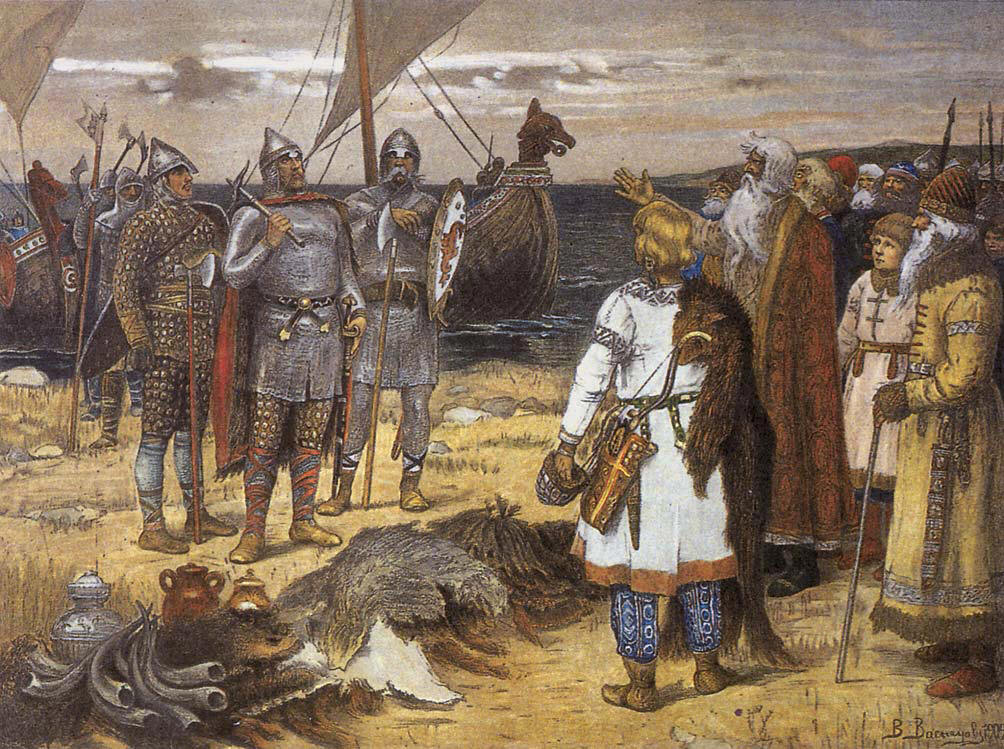

-
does it matter if ancient russians were black?
-
does it matter if ancient russians were black?
Yes as far as knowing the History. I did a ask.com search about two years ago and they said that there was no Black people in Russia. -
Here are images of Prince Novgorod...
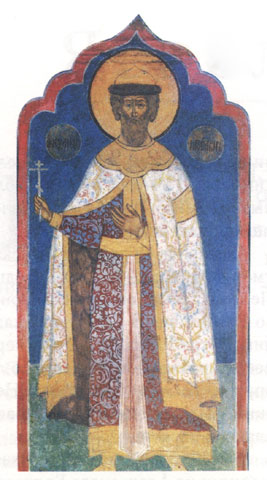

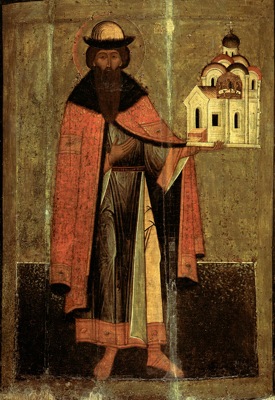

http://www.novgorod.ru/english/read/information/common/
General information
Welcome to Velikiy Novgorod.
Velikiy Novgorod - one of the most ancient cities of Russia located in its North-West, near the site where the Volkhov river takes its waters from Lake Ilmen, emerged as a political center of Slavic and Fino-Ugric tribes in the mid-9th century, while as a town it was formed in the middle of the 10th century.
The history of Novgorod is closely linked with all major stages in the life of the Russian state. In those times, when the statehood of Rus was just in the making, the Novgorodians invited Scandinavian prince Rurik to keep law and order, thus giving birth to the prince Rurik dynasty that ruled over all Russian lands throughout more than 750 years. -
does it matter if ancient russians were black?
Also...look at the uproar about the movie Thor...
http://badassdigest.com/2010/12/15/racists-and-ocd-geeks-agree-there-should-be-no-blacks-in-thor
Racists And OCD Geeks Agree: There Should Be No Blacks In THOR
When it was announced that Idris Elba was playing Norse ? Heimdall in THOR, some fans got up in arms. Turns out they have an ally in a racist organization who wants to boycott the film.
When it was announced that Idris Elba was cast as Heimdall in Kenneth Branagh’s Thor, there was a certain segment of the online population that went nuts. See, Heimdall - a relatively minor character in the Thor comics - had been traditionally portrayed as white, as had all the gods of Asgard. Even small changes like costume differences or hair color can send comic book fans spiraling into a rage, so the change of race made some people apparently ? their pants.
Turns out they’re not alone. The Council of Conservative Citizens, classified as a hate group by the Southern Poverty Law Center, is riled up as well. They’re either linking to or running a website called Boycott Thor, whose mission statement is as follows:
Race matters in this world -
The Chechen people are the descendants of the Novgorod. This is a video of one of their leaders who was recently assassinated. Today the Chechen people live under strick Russian rule.
There last leader may have also been killed.
-
Pic of Chechen/Russian actor musician Black Star ТИМАТИ


-
Here's his music video...
-
More Black russian Chechen rappers..
-
More Leaders of Russia/Kiev Ukraine early 20th century..
Vladimir the Great of Russia. Grand Prince of the Ukraine. he is considered a Saint and is still worshiped today...
http://www.johnsanidopoulos.com/2010/11/skull-fragment-of-vladimir-great-stolen.html
Brent Wittmeier
November 3, 2010
Edmonton Journal
A 1,000-year-old skull fragment believed to belong to Vladimir the Great was stolen and recovered in Edmonton over the weekend.
The 2.5-centimetre-square piece of skull, on loan from the Ukrainian Orthodox Church in Kyiv, was on a two-day stop in Edmonton when it was stolen in the middle of the night from a west-end home.
Vladimir is venerated by Eastern Orthodox Christians after he converted to the faith in 988 and baptized the lands under his rule, including parts of modern Ukraine and Russia.
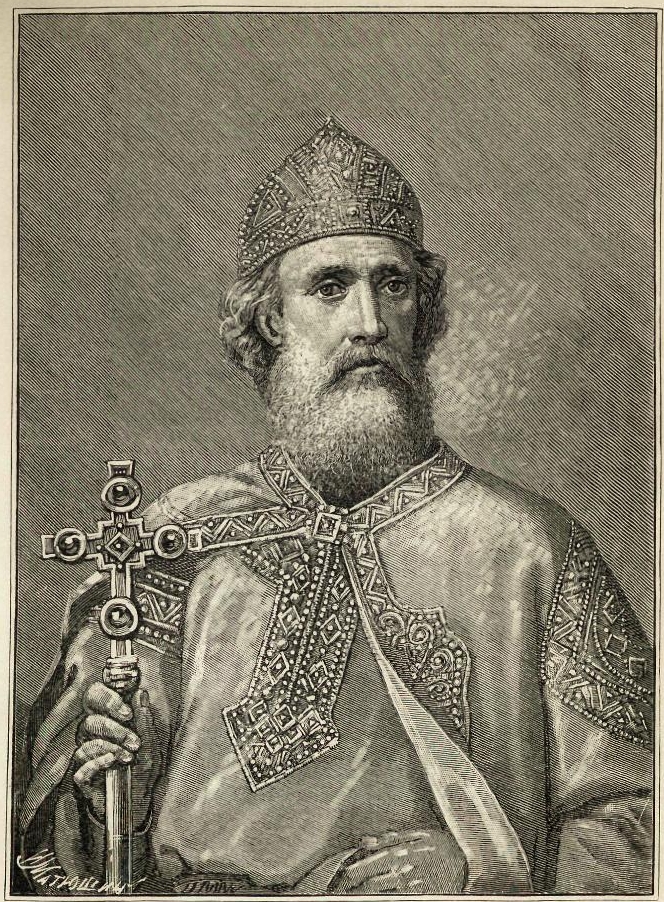
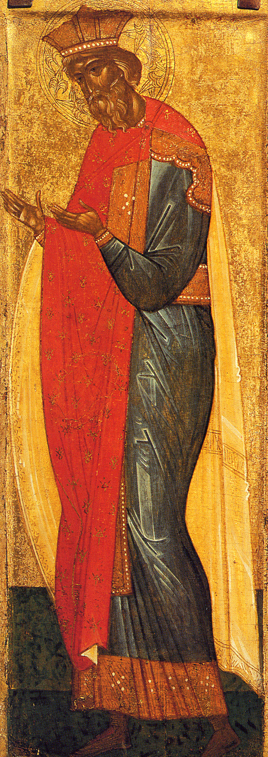
Here is his modern day statue in London with inscription ruler of Ukraine.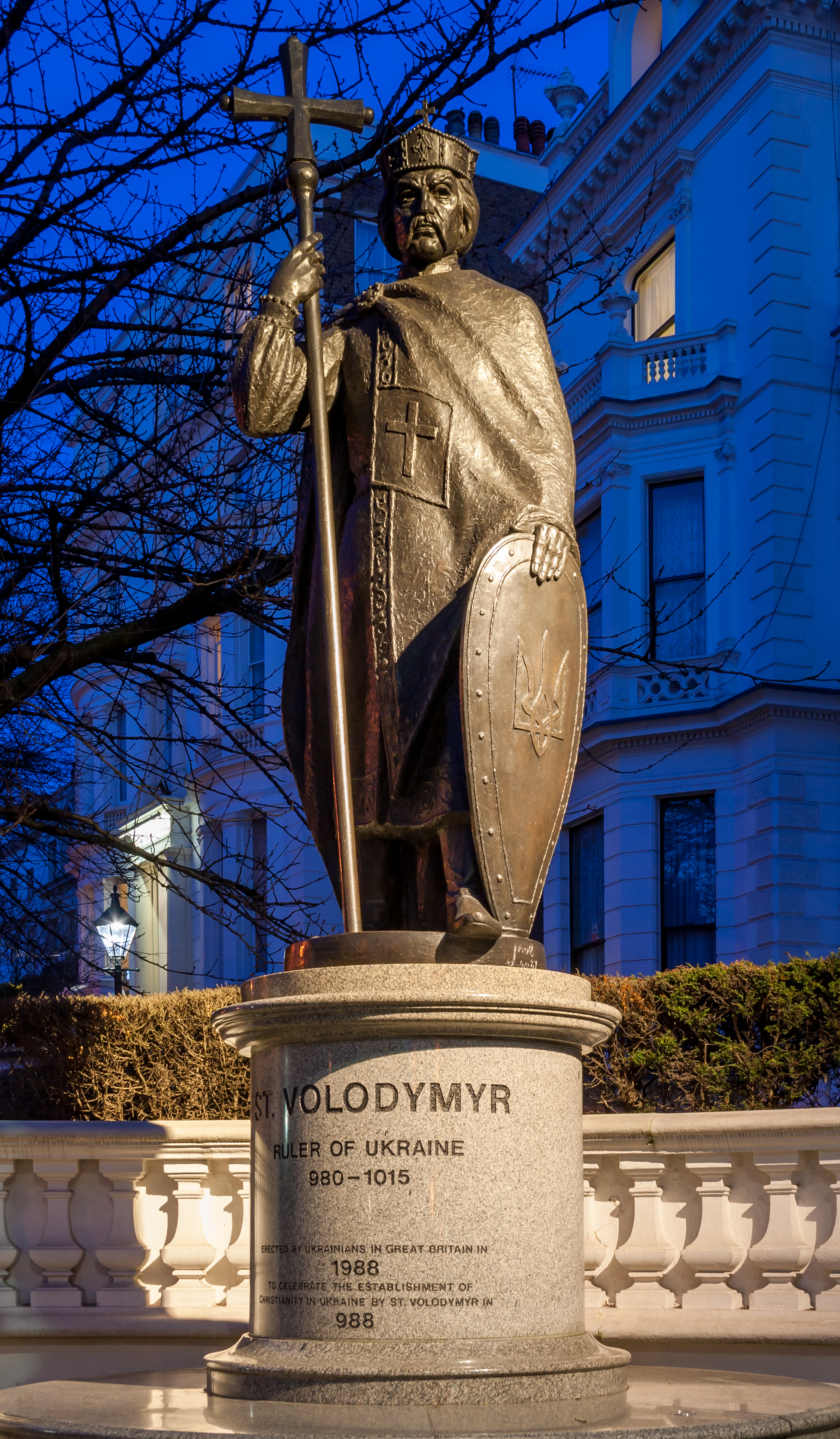
-
Sons of Vladimir the Great...
Yaroslav The Wise. Yaroslav I the Wise was thrice Grand Prince of Novgorod and Kiev, uniting the two principalities for a time under his rule. During his lengthy reign, Kievan Rus' reached the zenith of its cultural flowering and military power. The early years of Yaroslav's life are shrouded in mystery. He was one of the numerous sons of Volodymyr the Great, presumably his second by Rogneda of Polotsk, although his actual age (as stated in the Primary Chronicle and corroborated by the examination of his skeleton in the 1930s) would place him among the youngest children of Volodymyr. It has been suggested that he was a child begotten out of wedlock after Volodymyr's divorce from Rogneda and marriage to Anna Porphyrogeneta, or even that he was a child of Anna Porphyrogeneta herself.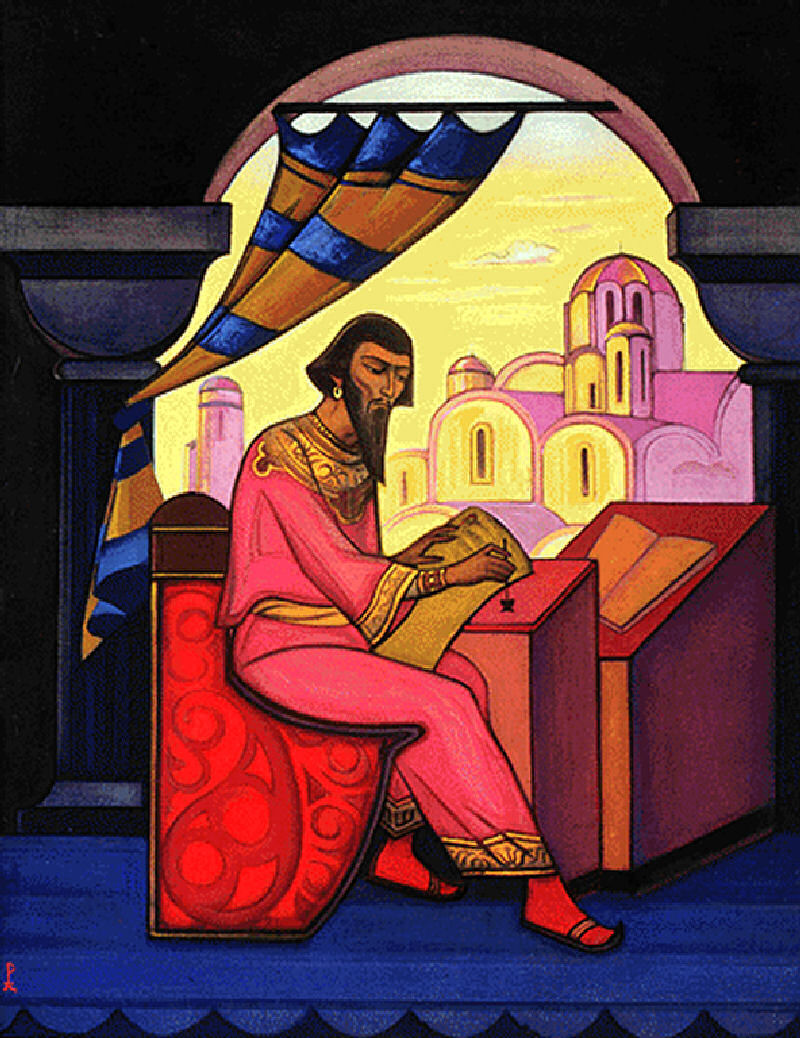
Izaiaslav I of Kiev, Ukraine and his son the Holy Prince Yaropolk Izyaslavich. His mother was Gertrude (about 1025[1] – 4 January 1108), princess of Poland, was the daughter of King Mieszko II of Poland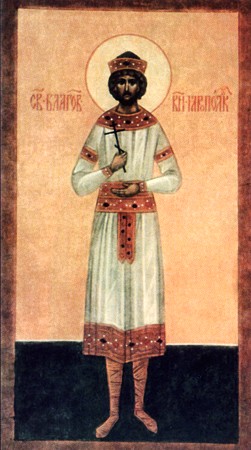
-
pictures of famous Ukranian people

-
A complete list of Ukrainian rulers here throughout history. Many of whom were Black...
http://www.filepie.us/?title=List_of_Ukrainian_rulers -
Just as all of the founding fathers of the United States are White; All of the founding fathers of Russia was Black. In this wikipedia page for the Millenium of Russia ( 1862 )http://en.wikipedia.org/wiki/Millennium_of_Russia, Rurik, who's father was clearly a Black Man is said to have founded Russia. And most if not all of the statues in the monumment are of Black people. I did an image search. After about seeing 20 images of people who looked clearly Black I knew I had to go no further. Russia was founded by Blacks.
The Millennium of Russia (Russian Тысячелетие России) is a famous bronze monument in the Novgorod Kremlin. It was erected in 1862 to celebrate the millennium of Rurik's arrival to Novgorod, an event traditionally taken as a starting point of Russian history.
Here are some of the people represented in the monument.
Ivan The Terrible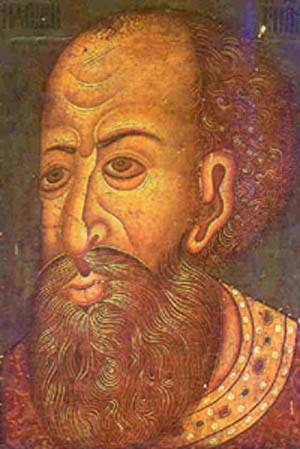
metropolitan of Moscow
Serguis Of Radonezh
-
You really don't know this information, it's just speculation on your part. Only that second picture looks close to a black person.
This discussion has been closed.





 https://www.youtube.com/watch?v=lFGC5sSM6l8
https://www.youtube.com/watch?v=lFGC5sSM6l8 https://www.youtube.com/watch?v=Y-V0Xwipatg
https://www.youtube.com/watch?v=Y-V0Xwipatg https://www.youtube.com/watch?v=-jYktv95-9g
https://www.youtube.com/watch?v=-jYktv95-9g https://www.youtube.com/watch?v=KG_H75wK6To
https://www.youtube.com/watch?v=KG_H75wK6To https://www.youtube.com/watch?v=ep_RjmBjluQ
https://www.youtube.com/watch?v=ep_RjmBjluQ